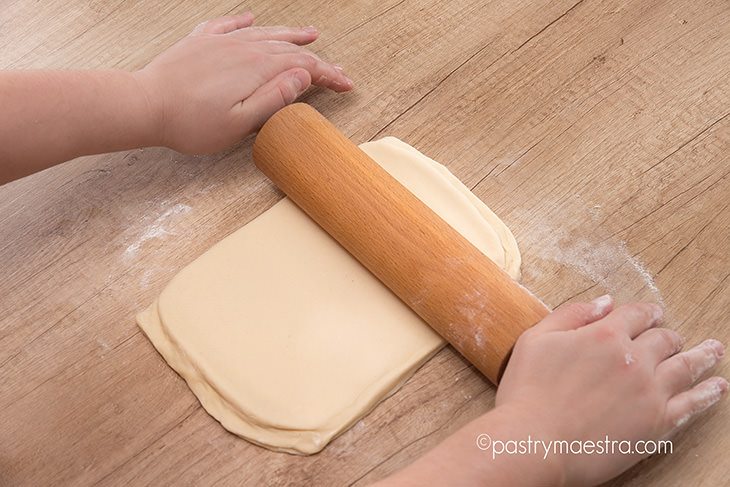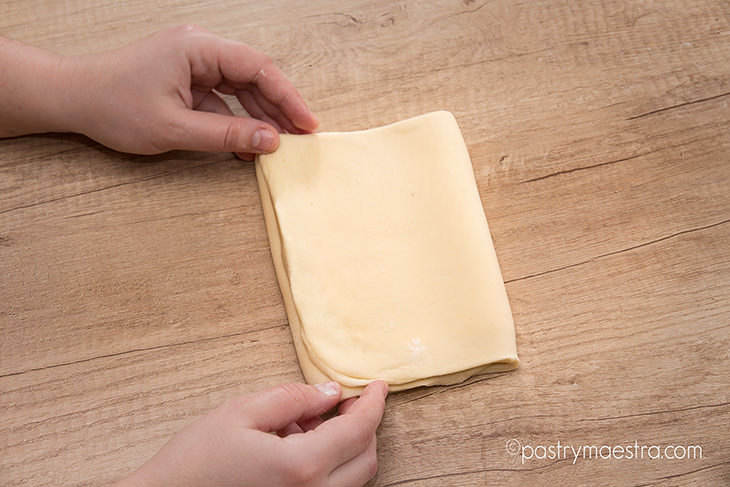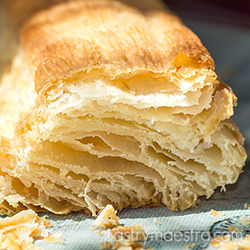
L
ayer upon layer upon layer upon layer…few ingredients, a ton of elbow grease, and buckets of sweat, but the result is worth it! And then some. Laminated dough is not great, it is – the best! Did you know that laminated dough consists of many superthin layers of dough separated by butter? And it is possible to make one just using your hands and a rolling pin!
What is Laminated Dough?
Laminated dough is made of alternating layers of dough and fat. It is made by wrapping the dough around the fat, shortening or butter. The enclosed fat is then rolled out and folded, and the process is repeated. Folding the dough is also called the “turn”. This process results with a large number of thin and delicate layers of dough and fat. When baked, butter inside evaporates and separates layers of dough, so it becomes flaky, crispy and golden brown. There are three main types of laminated dough: puff pastry, croissant dough and Danish pastry.
Laminated dough can be made of simple mixtures of flour, fat, and water for making puff pastry, or it can contain yeast when made for croissants and Danish pastry. Flour with 11%-12.5% of protein content is best suitable for making laminated dough because it gives the dough enough elasticity to stretch and enough strength to hold the fat inside. The minimal fat content in the dough is 30% while some extra rich pastries can contain up to 80% of fat. It is possible to use vegetable fats for lamination although butter is much better choice because it gives better texture, flavor and color to baked pastries. Ideally you should use dry butter – beurre sec – as it contains more fat (84%) compared to regular European butter (82%).
What Can I Make of Laminated Dough?
Pastries made of laminated dough are numerous; mille-feuilles in France, crescent roll in the US, crispy sfogliatelle and millefoglie in Italy… There are also famous buttery croissants, and wonderful Danish pastry, all made of laminated dough. I know, you can just run to the nearest bakery and buy one, but there is a special reward for making one of these from scratch! And it isn’t that difficult!
How to Make Laminated Dough from Scratch?
Preparing Basic Dough
This is the first step in making the laminated dough. The basic dough is rather dry and firm because the soft dough would easily stretch and break while folding. The dough shouldn’t be kneaded too much, so the gluten isn’t overworked. The dough for croissants and Danish is usually chilled in the refrigerator overnight to relax the gluten.

Preparing Fat
The fat shouldn’t be too cold and stiff, but it also shouldn’t be at the melting point. If the fat is too cold, it will break inside the dough into little chunks. However, if it is too soft, the fat will melt. It is best to manually soften the butter and shape it in the form of a rectangle.
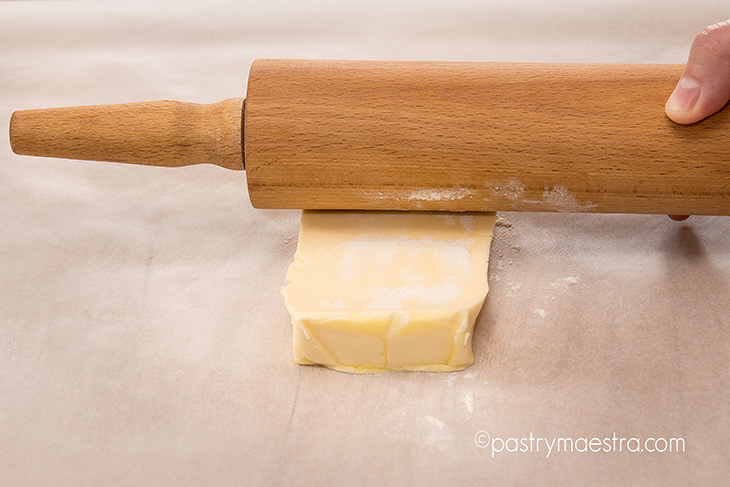
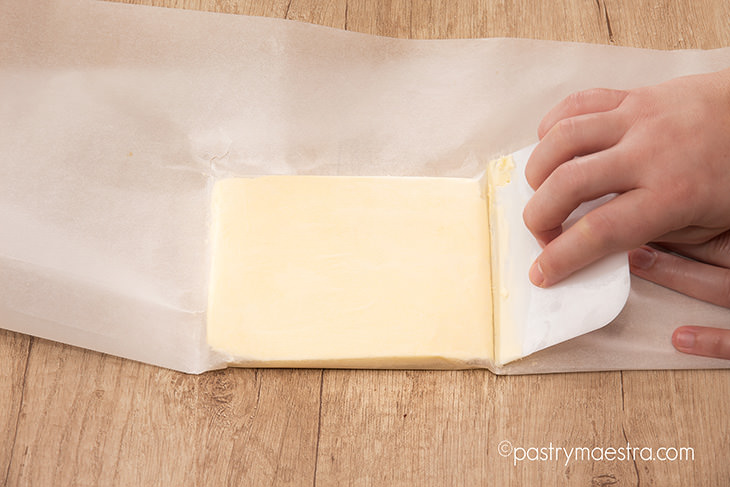
Wrapping the Dough around Fat
The dough should be flattened and rolled into size double than the fat to enclose it. The ends of the dough should be sealed well to secure that butter remains inside the dough.
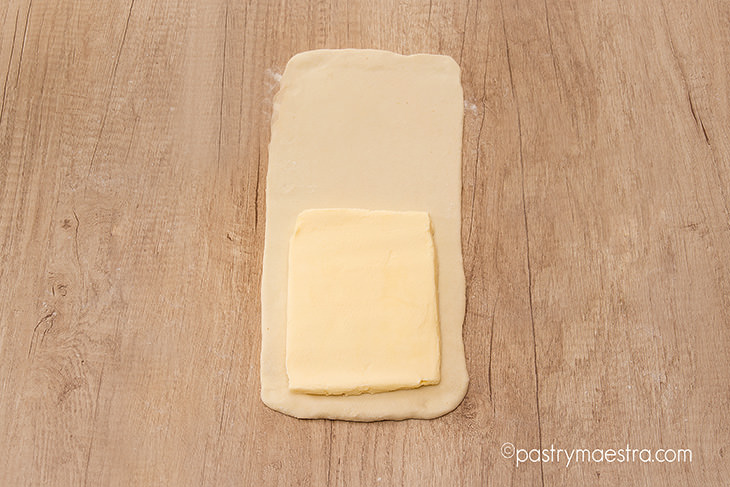
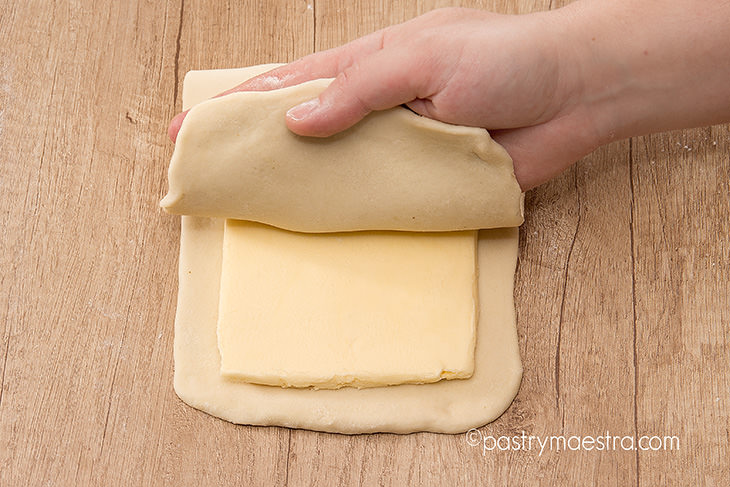
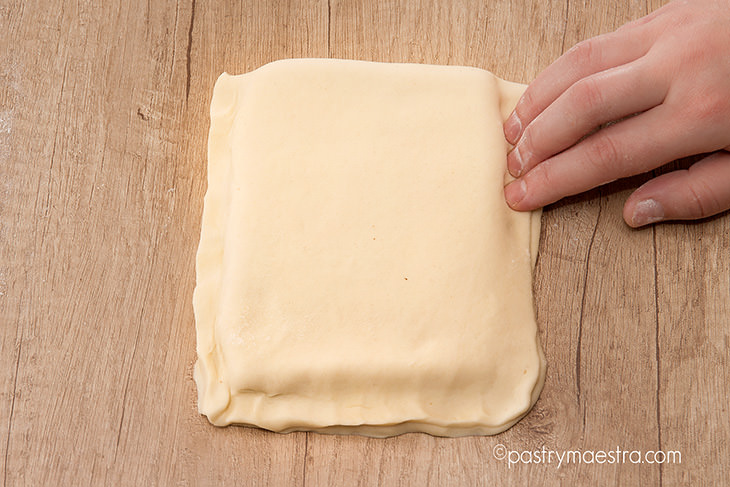
Turning the Dough
The butter should be evenly rolled inside the dough and then turned. There are several different ways to turn the dough: single turn, double turn, and half turn. It is important to maintain the regular shape of the dough while rolling and turning because it will ensure proper lamination. If necessary, the dough can be chilled and rested between turns. To prevent sticking to the surface the flour is used, and the excess should be brushed off.
